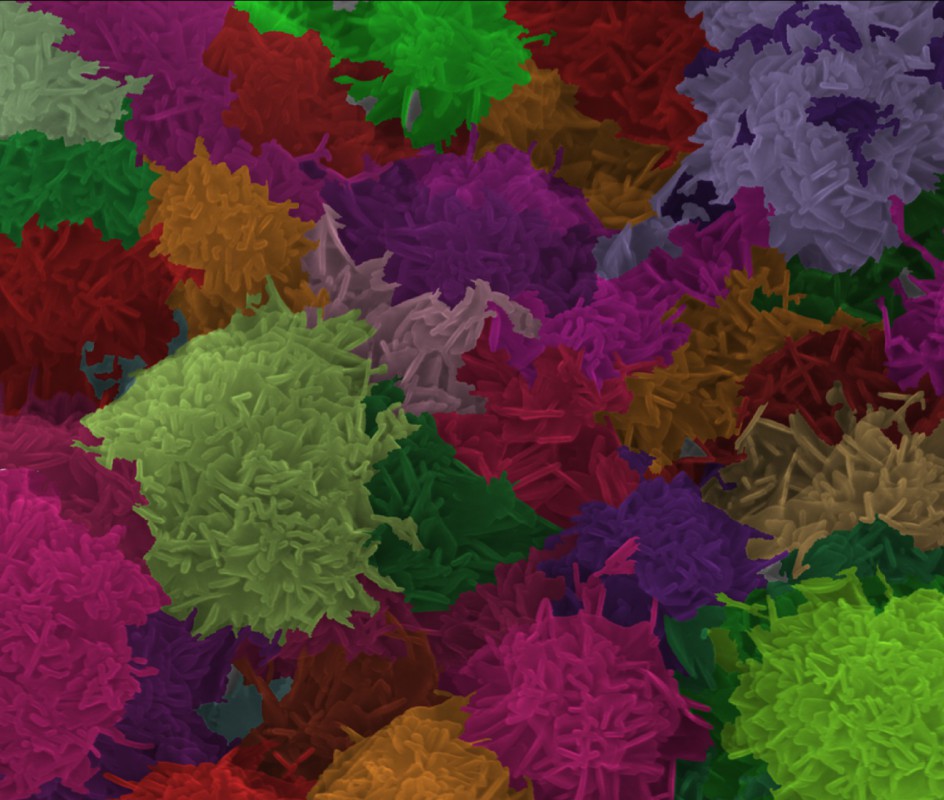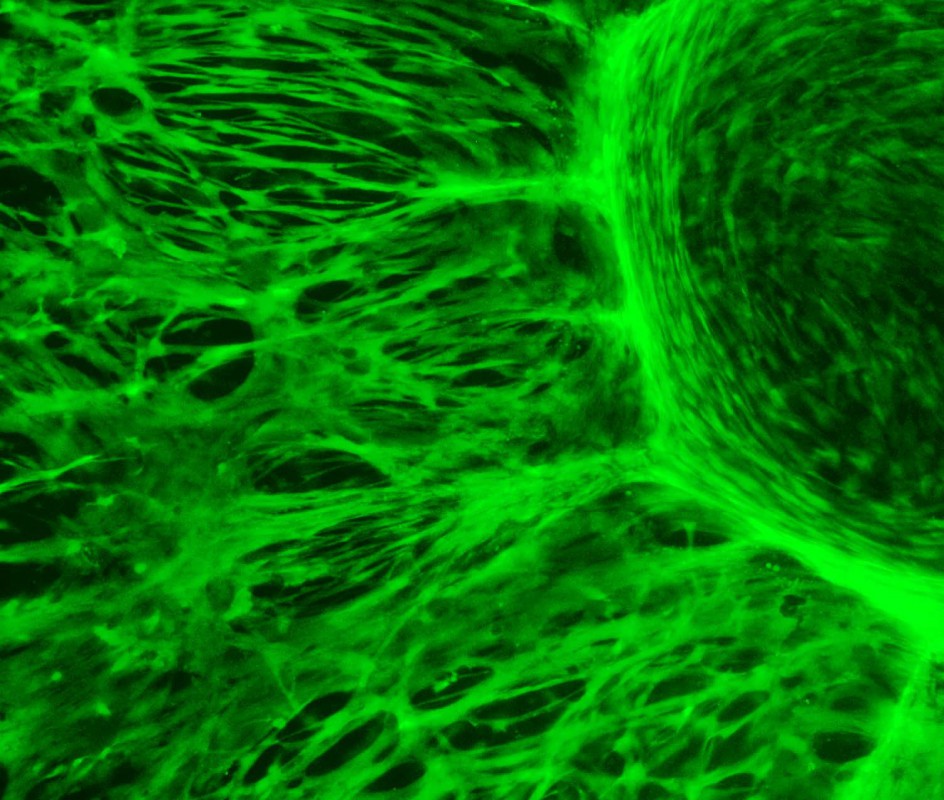Projects
BIOBLOCKS - Concepção de produtos de base biológica como percursores para a bioindústria de síntese química e de biomateriais a pertir de fontes renováveis lenhocelulósicas (BioBlocks)
PartnerIndustry National
O aumento dos preços de petróleo e uma maior apetência dos consumidores por produtos ecológicos e sustentáveis, têm vindo a viabilizar progressivamente o processo de produção e comercialização de biocombustíveis, bioquímicos e biopolímeros com base em materiais de fontes renováveis alternativos aos de origem petroquímica, permitindo a emergência...Bioinspired nanostructured biocomposites based on proteins and polysaccharides nanofibrils (EXPL/CTM-POL/1802/2013)
PartnerFundação para a Ciência e a Tecnologia
Proteins and polysaccharides nanofibrils Nanostructured materials Self-assembly Biomedical applicationsControlled chemical modification of polysaccharides for the development of novel materials (PTDC/QUI/68472/2006 )
PartnerFundação para a Ciência e a Tecnologia
Polysaccharides Chemical modification Composites Functional materialsCreating value from bio-wastes: suberin extraction and biotransformation in biocompatible ionic liquids aiming on novel biomaterials and compounds (PTDC/QUI-QUI/120982/2010)
PartnerFundação para a Ciência e a Tecnologia
cork (suberin and extractives) biomaterials biocompatible ionic liquids extraction and dissolutionDevelopment of a new phase change material composite for energy storage and thermal insulation (POCI/CTM/60288/2004)
PartnerFundação para a Ciência e a Tecnologia
Phase Change Material Composite Energy storage Thermal insulationEcopolyol - Desenvolvimento do processo de produção de polióis a partir de resíduos de biomassa (ECOPOLYOL)
PartnerIndustry National
Construção e desenvolvimento de uma Instalação Piloto para Demonstração Industrial, certificação e validação do processo industrial do ponto de vista de Boas Práticas e Tecnologia Segura, obtenção de amostras industriais e certificação produto. Testar a viabilidade química e física das matérias primas.Eucalyptus triterpenic biological activity (PTDC/AGR-FOR/3187/2012)
PartnerFundação para a Ciência e a Tecnologia
Eucalyptus spp Ionic Liquids Antitumoral Activity MetabolomicsGREENPEC - Desenvolvimento de um plastificante primário para PVC, de origem animal e livre de ftalatos (GREENPEC )
PartnerIndustry National
O objetivo principal deste projeto, levado a cabo pelo consórcio entre a Sapec Química e a Universidade de Aveiro, consiste no desenvolvimento de um plastificante primário para PVC originado a partir de óleos vegetais, os quais são considerados recursos renováveis e agentes de crescimento sustentável. Com o cumprimento destes objetivos, prevê-se...Improving the yield of Eucalyptus globulus Kraft Pulp Production: Strategies, Mecanisms and Impact on Pulp Economy (POCTI/EQU/46124/2002)
CoordinatorFundação para a Ciência e a Tecnologia
Cellulosic pulp Eucalyptus globulus Kraft process yieldMACROMOLECULAR AND LIGNOCELLULOSIC MATERIALS LABORATORY (REEQ/584/CTM/2005)
CoordinatorFundação para a Ciência e a Tecnologia
The new equipment, including a particle size analyzer (0.6 nm a 6 ?m) and light scattering and viscometry detectors for mass molecular determinations (in tandem with pre-existing GPC system) has been installed and is running in perfect conditions. This equipment represents a reinforcement of the pre-existing facilities at CICECO for the characte...Mould proteome regulation by substrate bioavailability: depolymerising enzymes likely to alter biopolymer nanostructure (POCI/QUI/56229/2004)
PartnerFundação para a Ciência e a Tecnologia
Mould proteome biopolymers nanostructure depolymerising enzymes corkRENOVA PAPTIS - Desenvolvimento de papéis tissue de nova geração (PAPTIS-RENOVA)
PartnerIndustry National
Os prod. de papel tissue têm vindo a adquirir 1 importância crescente nas sociedades modernas. Assim, as empresas produtoras de papel tissue para se manterem no mercado e crescerem apostam no desenvolvimento e optimização de processos para dar origem a produtos inovadores, q se diferenciem e q ofereçam ao consumidor, características valorizáveis...SUNPAP - Scale-Up Nanoparticles in Modern Papermaking (SUNPAP)
Local CoordinatorEuropean Comission
Past years have made the radical change of the European paper industry evident to everyone. To accelerate growth, the industry has to beat the product commoditization and renew its product base with value-added products. Energy saving is not just part of the environmental agenda, it has become the most crucial topic for the competitiveness of Eu...SUSTAINPACK - Innovation and Sustainable Development in the Fibre Based Packaging Value Chain (SUSTAINPACK)
Local CoordinatorEuropean Comission
The main objective of SUSTAINPACK was to ensure the future prominence and competitiveness of fibre based packaging using the exciting new opportunities in the field of nanotechnology, material coatings and communication technologies. Through research, development and application of nanotechnology SUSTAINPACK aims to reduce supply chain costs and...WACHEUP - New Concepts For Upgrading Pulp Mill Waste Streams to Values - Added Chemicals (WACHEUP)
Local CoordinatorEuropean Comission
The objective is to upgrade low-value residual products from kraft pulp and cork manufacture into valorised green chemicals, with methods that can be efficiently integrated with the pulp/cork mills. Considerable residual streams become low-value heat at th e mills with no practical use. This is a sub-utilisation of the potential of the chemicals...Publications
Secondary metabolites from Eucalyptus grandis wood cultivated in Portugal, Brazil and South Africa
Santos, SAO; Vilela, C; Domingues, RMA; Oliveira, CSD; Villaverde, JJ; Freire, CSR; Neto, CP; Silvestre, AJD
2017, INDUSTRIAL CROPS AND PRODUCTS, 95, 357-364.
Unravelling the distinct crystallinity and thermal properties of suberin compounds from Quercus suber and Betula pendula outer barks
Sousa, AF; Gandini, A; Caetano, A; Maria, TMR; Freire, CSR; Neto, CP; Silvestre, AJD
2016, INTERNATIONAL JOURNAL OF BIOLOGICAL MACROMOLECULES, 93, 686-694.
Rigid polyurethane foams derived from cork liquefied at atmospheric pressure
Gama, NV; Soares, B; Freire, CSR; Silva, R; Brandao, I; Neto, CP; Barros-Timmons, A; Ferreira, A
2015, POLYMER INTERNATIONAL, 64, 2, 250-257.
Bio-based polyurethane foams toward applications beyond thermal insulation
Gama, NV; Soares, B; Freire, CSR; Silva, R; Neto, CP; Barros-Timmons, A; Ferreira, A
2015, MATERIALS & DESIGN, 76, 77-85.
Spent coffee grounds as a renewable source for ecopolyols production
Soares, B; Gama, N; Freire, CSR; Barros-Timmons, A; Brandao, I; Silva, R; Neto, CP; Ferreira, A
2015, JOURNAL OF CHEMICAL TECHNOLOGY AND BIOTECHNOLOGY, 90, 8, 1480-1488.
In situ synthesis of bacterial cellulose/polycaprolactone blends for hot pressing nanocomposite films production
Figueiredo, ARP; Silvestre, AJD; Neto, CP; Freire, CSR
2015, CARBOHYDRATE POLYMERS, 132, 400-408.
Protein-based materials: from sources to innovative sustainable materials for biomedical applications
Silva, NHCS; Vilela, C; Marrucho, IM; Freire, CSR; Neto, CP; Silvestre, AJD
2014, JOURNAL OF MATERIALS CHEMISTRY B, 2, 24, 3715-3740.
Topical caffeine delivery using biocellulose membranes: a potential innovative system for cellulite treatment
Silva, NHCS; Drumond, I; Almeida, IF; Costa, P; Rosado, CF; Neto, CP; Freire, CSR; Silvestre, AJD
2014, CELLULOSE, 21, 1, 665-674.
Bacterial cellulose membranes as transdermal delivery systems for diclofenac: In vitro dissolution and permeation studies
Silva, NHCS; Rodrigues, AF; Almeida, IF; Costa, PC; Rosado, C; Neto, CP; Silvestre, AJD; Freire, CSR
2014, CARBOHYDRATE POLYMERS, 106, 264-269.
Unveiling the Chemistry behind the Green Synthesis of Metal Nanoparticles
Santos, SAO; Pinto, RJB; Rocha, SM; Marques, PAAP; Neto, CP; Silvestre, AJD; Freire, CSR
2014, CHEMSUSCHEM, 7, 9, 2704-2711.
2 Bacterial Cellulose-Based Nanocomposites: Roadmap for Innovative Materials

Nanocellulose Polymer Nanocomposites: Fundamentals and Applications
A. R. P. Figueiredo, C. Vilela, C. Pascoal Neto, A.J.D. Silvestre and C.S.R. Freire
2014, Scrivener, Willey.
ISBN:
978-1-118-87190-4
Composites of cellulose and metal nanoparticles

In F. Ebrahimi (Eds.), Nanocomposites - New Trends and Developments
Pinto, R. J. B.; Neves, M.C.; Pascoal Neto, C. and Trindade, T
2012, Rijeka, InTech.
ISBN:
978-953-51-0762-0
Carbamates: Human Exposure and Health Effects

The Impact of Pesticides
Freire CSR, Fernandes SCM, Silvestre AJD, Neto CP, Gandini A
2011, Servia, AcademyPublish.
Cork and suberins: major sources, properties, applications

In Belgacem MN, Gandini A (Eds.), Monomers, oligomers, polymers and composites from renewable resources
Neto CP, Silvestre AJD, Gandini A
2008, 305-320, Oxford, Elsevier lda..
ISBN:
978-0-08-045316-3
The bulk oxypropylation of chitin and chitosan and the characterization of the ensuing polyols

In Senel S, Vårum KM Sumnu MM Hincal AA (Eds.), Advances In Chitin Science
Fernandes S, Freire CSR, Pascoal Neto C, Gandini A
2007, 10, 530-535, Antalya.
ISBN:
978-975-491-250-0
Química de Polímeros

In Melo JS, Moreno MJ, Burrows HD, Gil M (Eds.), Química de Polímeros
Pascoal Neto C, Evtuguin DV
2004, 545-570, Imprensa da Universidade de Coimbra.
ISBN:
972-8704-22-4
Patents
Aqueous coating compositions for use in surface treatment of cellulosic substrates

Products InternationalNational
Neto, Carlos; Barros, Carmen; Fernandes, Susana; Silvestre, Armando; Gandini, Alessandro;
The present invention relates with the application of novel coating compositions, containing chitosan (and its derivatives) and bacterial cellulose, for the improvement of the final properties of cellulosic based materials, like paper and textile materials. The process involves the preparation of homogeneous bacterial cellulose-chitosan...Lignocellulosic composites and phase transition materials for thermo insulation and energy storage

Products National
Coutinho, João ; Neto, Carlos
The present invention relates to the formulation and preparation of composites based on lignocellulosic materials by incorporating phase change materials with the purpose of their application in thermal insulation and reversible energy storage. Lignocellulosic materials provide thermal insulation properties to the composite while also p...Method for Obtaining na Extract Rich in Triterpenic Acids From Eucalyptus Barks

Processes InternationalNational
Domingues, Rui ; Barros, Carmen; Silvestre, Armando; Neto, Carlos; Silva, Carlos;
The present invention relates to a method of obtaining extracts having very high contents (up to 98%) of triterpenic acids, mainly oleanolic and ursolic acids, from Eucalyptus barks. The method involves the solid-liquid extraction of the bark with organic solvents, preferably hexane, and the fractionation of the crude extract by means o...Process for the production of liquid poliols of renewable origin by the liquefaction of agro-forestry and agro-food biomass

Processes InternationalNational
Gandini, Alessandro; Pinto, José; Neto, Carlos
The present invention concerns the process for producing liquid polyols of renewable origin from organic materials such as agro-forestry and agro-food biomass and respective industrial residues, constituting a profitable and bio-friendly alternative to commercial polyols obtained from petrochemical sources. The said process involves two...





